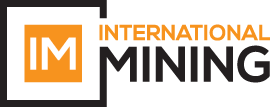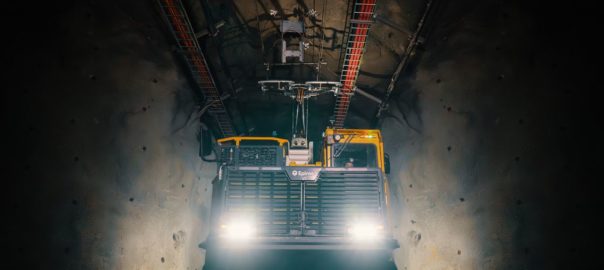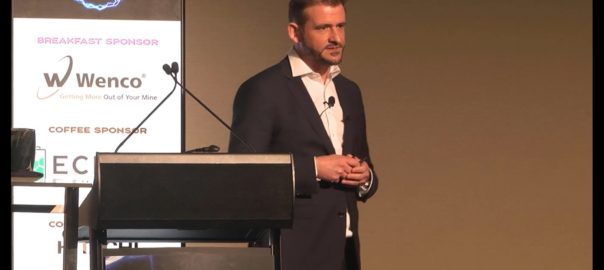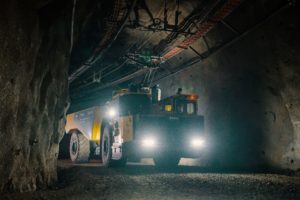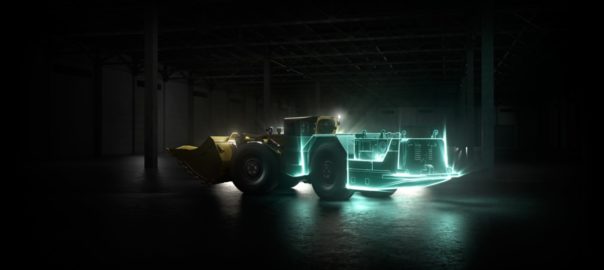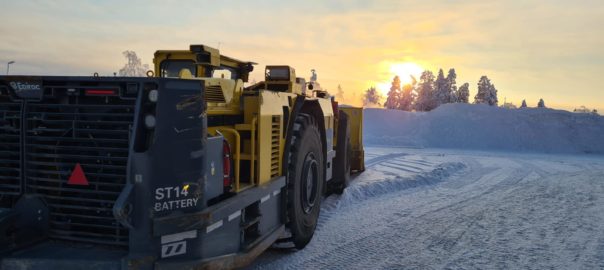Boliden is used to setting the standard in mining, and its latest innovation leap focused on electrification at the Rävliden mine in northern Sweden is another example of it leading from the front.
The Sweden-based company has a vision of being the most climate-friendly and respected metal provider in the world, and, from what IM witnessed and heard last month during a visit to the extension of the Kristineberg mine, Rävliden, it is well on its way to doing that.
The group climate targets that were validated and approved by the Science Based Targets initiative at the back end of 2023 – reducing absolute CO2e Scope 1 & 2 emissions by 42% in 2030 from the 2021 baseline among these – are important markers for Boliden, but what is even more impressive is the actions being taken on the ground to hit these.
Among them are the addition of numerous battery-electric vehicles into the underground operating fleets in the mines within the Boliden Area and Garpenberg, the open-pit trolley assist achievements made with diesel-electric drive trucks at Aitik and Kevitsa and, at the Smelting divisions, major investments in recycling. This is underpinned by energy inputs that are from predominantly fossil fuel-free grids or with captive green energy supply.
This has allowed the company to establish Green Transition Metals (GTM): a portfolio of recycled and low-carbon metals that it sells on the market and act as a key differentiator in the commodity space. To this point, these products have allowed the company to access forms of finance unavailable to competitors lacking such green credentials.
The philosophy behind this tangible example of sustainable commodity supply has been felt upstream and downstream of Boliden HQ, as confirmed by Patrik Westerlund, Boliden Senior Development Engineer.
Westerlund is responsible for the underground truck trolley project at Rävliden and says he has felt the backing and involvement of management at every turn of the project.
“Whenever reporting on progress on the project, I have felt support from management,” he told IM. “Innovation is encouraged from the top down at Boliden.”
Battery truck trolley first
In 2021, the company outlined a SEK1.25 billion ($123 million) investment at Kristineberg towards further developing the mine towards the Rävliden mineralisation. This expansion was expected to contribute to an increase in milled volumes in the Boliden Area to 1.8 Mt/y.
A satellite deposit close to Kristineberg – which, itself, has been operating since the 1940s – Rävliden constitutes a sub-vertical to steeply south-dipping, 5-25-m wide and 150-m high mineralised lens, or system of lenses, with a length extent of at least 900 m along plunge. The mineralisation at Rävliden is broadly of a similar character to Kristineberg although is amenable to both long-hole stoping and transversal open stoping – as opposed to the cut and fill mining and drift and fill mining methods utilised to mine the mineralised material underground at Kristineberg.
Exploration of the Rävliden mineralisation has resulted, to date, in 8.4 Mt of inferred and indicated mineral resources. The deposit contains copper, zinc, lead, silver and gold, with mining rates of 800,000 t/y making for a 10-year operation.
Where the project gets very intriguing – and the reason for IM’s visit – is in the company’s haulage plan.
Where Kristineberg uses a 160 t/h skip hoist to get the crushed ore to surface, Rävliden is expecting to transport its ore, waste, concrete and personnel using a 5.6-km ramp stretching from surface to 750 meters underground, at an average incline of 1:7.
This will represent a world-first battery-trolley operation, which the company is already proving out via an 800-m trolley test track – also a world first.
IM, during late August, witnessed one of these fully loaded Epiroc battery-electric Minetruck MT42 SG Trolley trucks in operation at the mine, along with the supporting infrastructure supplied by ABB and others. The on-board truck infrastructure includes ABB’s DC-DC converter, HES880 inverters and AMXE motors to enhance the power of the machine, while there are off-board rectifier substations for the track. The ABB Ability™ System 800xA® was also showcased during the visit, which monitors and controls the electrical system. In addition, Siemens provided on-board hardware for the MT42 SG Trolley truck.
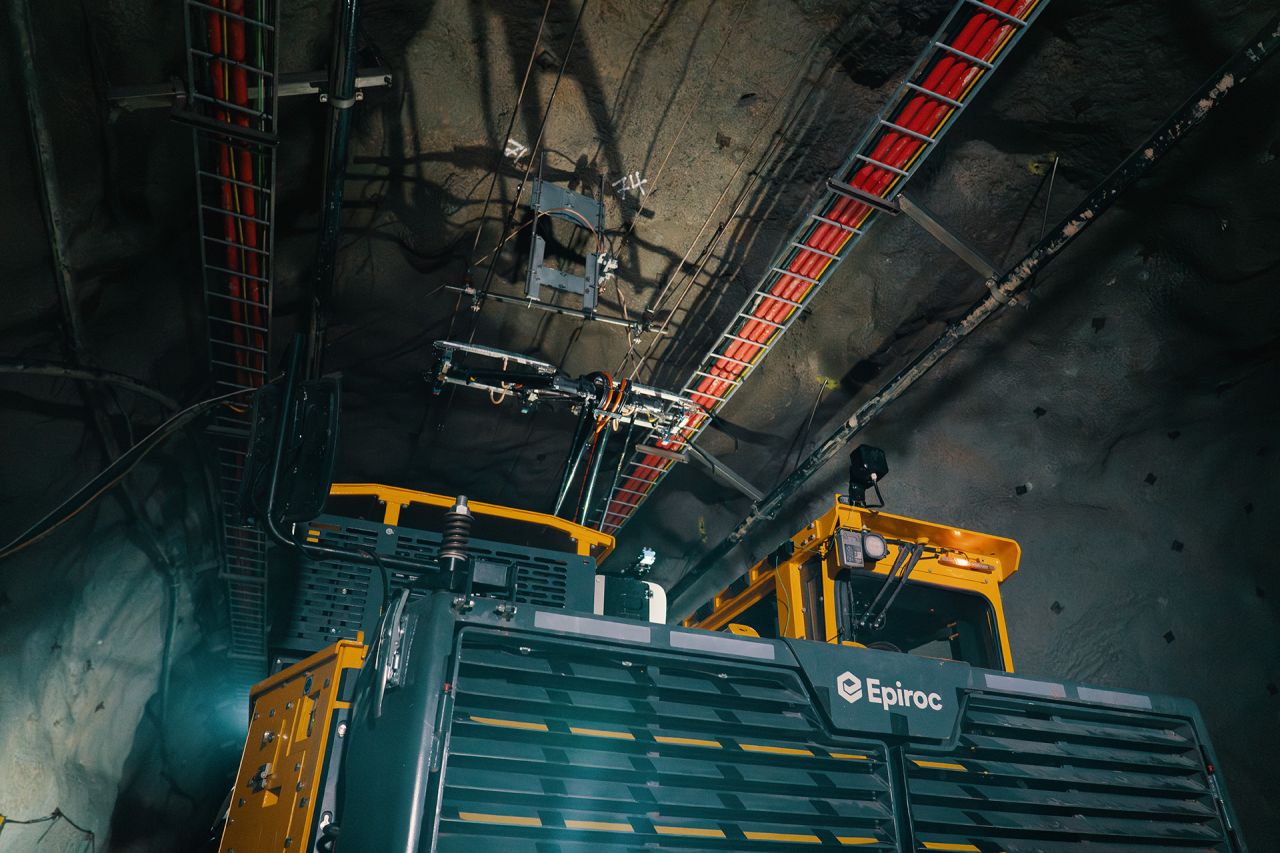
The truck features a trolley pantograph connected to an overhead catenary line, which is similar in makeup to an on-road electric highway application.
During the visit, ABB highlighted how its solution had been customised and tweaked to work within the regulations and safety standards in Sweden, as well as Boliden’s own site requirements.
Epiroc also showcased how its battery-electric Minetruck MT42 SG has been adapted to work on trolley; the most obvious adaptation being the use of three battery subpacks as opposed to the standard five subpacks the battery-only machine is normally equipped with. The removal of 40% of battery power was justified to make room for the on-board DC-DC converter, as well as the reduction in power required to operate on the trolley line – as is currently envisaged, the trucks will only run on battery power alone for a circa-0.9 km stretch of the 5.6-km ramp.
Franck Boudreault, Epiroc’s Underground Application Expert Electrification, remarked on the economic benefits of running off grid-backed trolley power, compared with battery power alone. The OEM’s modelling also indicated the batteries on board would benefit from a substantial uplift in life due to the comparatively “light duty” application they would have while on trolley. This increased longevity would translate to reduced operating costs over the mine’s lifetime.
BEV loader first
As if the battery-trolley first was not enough for one project, Rävliden also became the first mine to automate stope loading with a battery-electric LHD – the Epiroc Scooptram ST18 SG – late last year at Rävliden. This is on top of commissioning ABC Total on an Epiroc Simba M6 longhole production rig at the operation. ABC Total allows for a full round of holes to be drilled automatically, according to Epiroc.
The miner’s ambitions go beyond this, though, with plans to automate the fleet of Minetruck MT42 SG Trolley trucks running on the ramp. The ‘concrete’ nature of these plans is evidenced by the fact Boliden has already built a loading station adapted for automation underground at Rävliden, as well as the moves to install an above-ground remote operations station later.
There is plenty more to this mine, which produced first concentrate last year, than ramp haulage.
The circa-$120 million investment also covers an underground crusher – a Metso Nordberg® C160 jaw crusher – a ventilation plant built with heat exchangers for increased efficiency and sustainability, a truck loading station, workshop and pumping stations.
The automated loaders carry blasted material from the stopes to either ore passes or loading pockets. Material is either directly loaded from the bottom of ore passes into the crusher at -750 m or by using MT42 SG trucks to transport material from loading pockets to the crusher. From the crusher, the material is transported by conveyors to loading chutes. These chutes feed crushed ore to the MT42 SG Trolley trucks, which move up the ramp and dump on surface. Ore is then trucked circa-90 km to the Boliden Area Operations Process Plant for beneficiation by flotation, before further processing the concentrate to a final product at the Rönnskär smelter, 65 km away.
The electrical infrastructure to support a complete fleet of electric vehicles and mobile equipment is also part of this, as Westerlund and his colleague Frida Pettersson (Project Manager at Rävliden) confirmed.
In a brief presentation on these plans, Westerlund outlined a fleet that included three battery-electric LHDs, three battery-electric trucks, four battery-trolley trucks, two “construction” battery-electric trucks, two electric light loaders and 12 “mining machines” that are also due to be battery-electric.
Battery-powered machines already ordered and/or delivered include two Epiroc Boomer E20 SG Battery drills, two Epiroc Boltec E10 SG Battery bolters, one Jama battery-powered SBU8000E underground scaler (using an Epiroc battery solution underpinned by Northvolt batteries), three Epiroc Scooptram ST18 SG LHDs, two MT42 SG trucks and the four MT42 SG Trolley trucks.
Westerlund admitted question marks remained over whether Rävliden would be able to source a full-electric fleet in the next few years, explaining that the company has had to employ diesel equipment where it cannot currently obtain the ‘green’ alternatives. He was hopeful there would be a proliferation of battery-electric integrated tool carriers in the near term – outside of the diesel-to-battery conversions available in relatively small quantities in Australia – as well as battery-electric material transport trucks from the likes of Scania. He also saw mass produced battery-electric pick-ups coming.
Haulage to surface and underground load and haul activities represent over 85% of diesel and CO2 emissions at the project, according to Westerlund, meaning the big emission wins are within reach.
All these machines could come together for a mixed battery-electric autonomy first, with Epiroc the likely integrator in this scenario – similar to what the OEM has achieved with a mainly diesel-powered fleet at the Cadia operation, in Australia, in partnership with MacLean.
This is the current plan, but there is some flexibility being built into the mining operations at Rävliden. Westerlund and Pettersson, for instance, said the ventilation plant had been sized for a bigger operation, with expectations that exploration will reveal more resources to justify higher mining rates.
Commercial appeal
With Boliden committing to this battery-trolley haulage scenario, it opens the question: how big a market is there for such a solution going forward?
There were several attendees from major and mid-tier mining companies on this trip, indicating interest is high. At least one mining contractor and some smaller consulting/engineering companies also joined the delegation in Sweden.
There were questions put to Westerlund and Pettersson from this community about whether the same throughput could be achieved via a hoisting operation. In response, Westerlund referred to the obvious fact that the planned haulage route meant the company could reuse the current industrial area and leave a very limited footprint on surface at Rävliden.
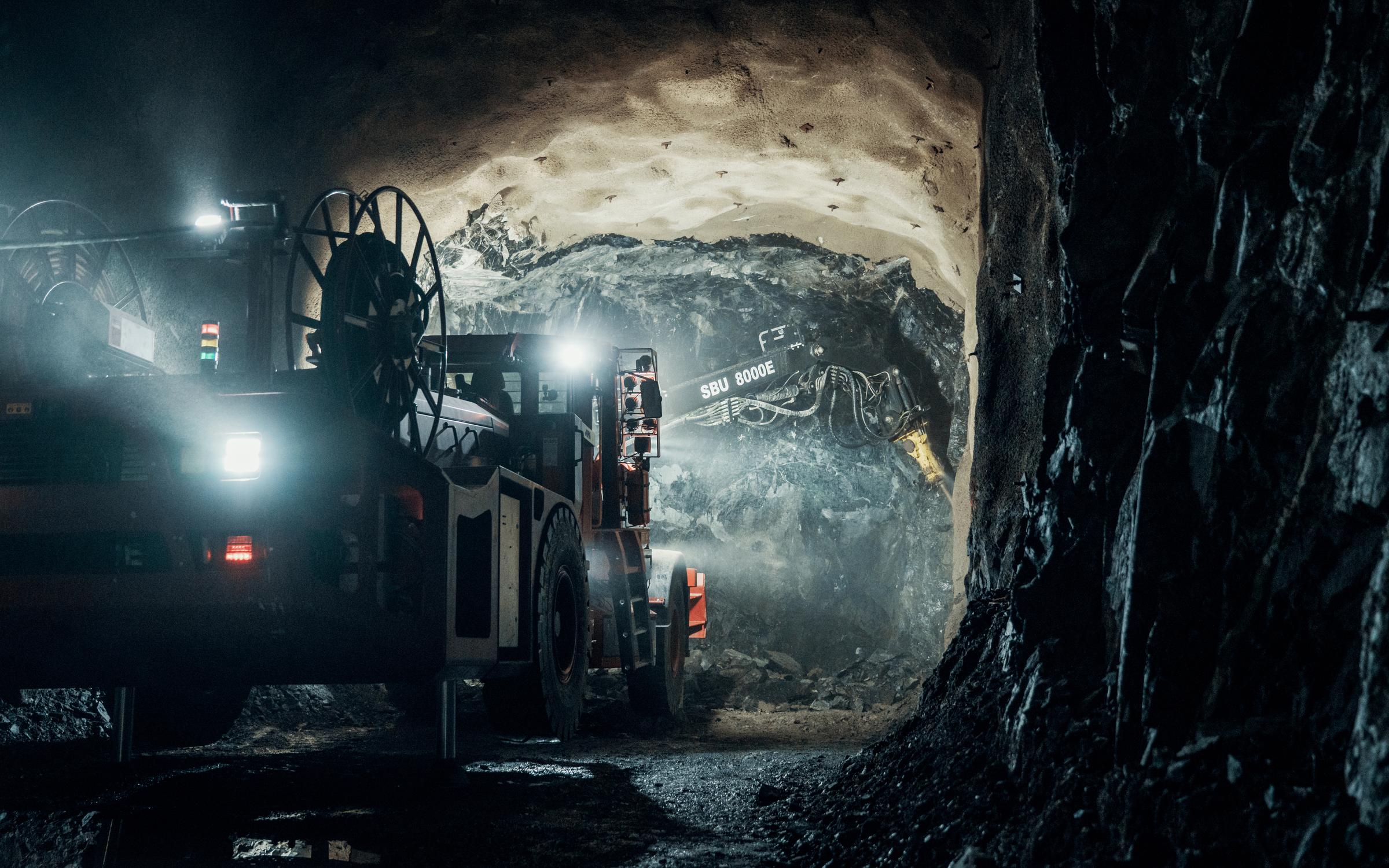
The battery-only haulage question came up too, but the 1:7 average incline of the ramp would likely require a significant number of battery swaps and/or charges during normal operation.
Boliden is in a very good position to enact this plan, being blessed with a significant amount of renewable power at Rävliden, expertise with battery-electric machines and the required electrical infrastructure thanks to previous trials and vehicle acquisitions, previous experience of underground trolley via Kiruna truck deployments at Kristineberg and elsewhere, and confidence in the expansion of its orebody.
While not in a unique position, there are only a few companies and operations that have all these factors going for them.
This will inevitably play into Epiroc’s plan to commercialise the MT42 SG Trolley system, and ABB’s own supporting electric infrastructure.
Boudreault said there were several criteria Epiroc wanted to tick off with the test track at Rävliden to highlight the commercial business case, including:
- Demonstrating the ability to manage energy in a smart way on trolley;
- Benchmarking the cost per tonne of such an operation; and
- Showcasing the potential productivity benefits.
“We very much see this proof of concept with Boliden as the ‘ice breaker’ in terms of battery-trolley haulage potential,” he said.
Those who visit the mine in 2025 will likely see the commercial operation of the 4.7-km trolley line, gaining an understanding that goes beyond the proof of concept, but Boudreault said the significant speed on ramp boost, improved cycle time and ability to deploy less trucks in such a haulage operation would prove enticing for starters.
“At the same time, we are aware that the right partners will be needed to make any new installation a success,” he explained, adding that ABB’s input may be sought again for such a deployment.
This is before considering the local electrical standards that such an operation would be guided by, plus any other safety-related regulations that would need consideration.
“All of these will be factored into trade-off studies that are specific to that operation and the company’s own requirements,” Boudreault said, adding that, on paper, an operation with a 5-10 year mine life was likely required to make a battery-trolley operation economically work.
Leading from the front
The involvement of Swedish innovation agency Vinnova and its initiative ‘Sustainable Industry’ – which includes some financing for the project – will undoubtedly have helped get such a project off the ground at Rävliden, yet don’t discount the ingredients Boliden can call on to create the ideal mix for such innovation.
More so than any other mining company, Boliden has integrated sustainability at every point of the supply chain.
It has been using an internal carbon price to make investment decisions at all its operations for over a decade; it has embedded recycling into its thinking, becoming one of the first miners to leverage smelting capacity to process such material; it has implemented nitrate-free and environmentally friendly explosives at some of its operations (Kankberg being one); and it has also embedded mill lining recycling into its activities at Aitik.
That’s before mentioning its feats in the mining equipment automation space, an arena the company feels will pair well with electrification to deliver more than the sum of their parts in the future.
Many of these feats have been facilitated by the renowned Nordic mining equipment, technology and service space, which has allowed the company to access and implement the solutions at a suitable pace.
Not all miners demand respect from their peers and stakeholders, and even fewer can claim to be ‘climate-friendly’. Boliden can argue it ticks both boxes.




